[Apple II, SSI, part 1/8]

Back in 2022, when I was covering – well – 1983, I had been impressed by Roger Damon’s Operation Whirlwind, lamenting that the game had only one scenario. While critically acclaimed, Operation Whirlwind had been commercially pulseless, something that may be explained by the choice of the Atari as a platform and of Brøderbund as a publisher. With his second product, Damon solved all of these issues, as he chose SSI as his publisher and shipped with 8 scenarios following the campaign of the E (“Easy”) Company of the prestigious 1st Infantry Division from Tunisia to Germany.
The first operation, called Night Patrol, a reconnaissance en force to Maknassy in Tunisia. The objective is to capture as many Italians as possible before either leaving the settlement through the South or beating a German counter-attack.
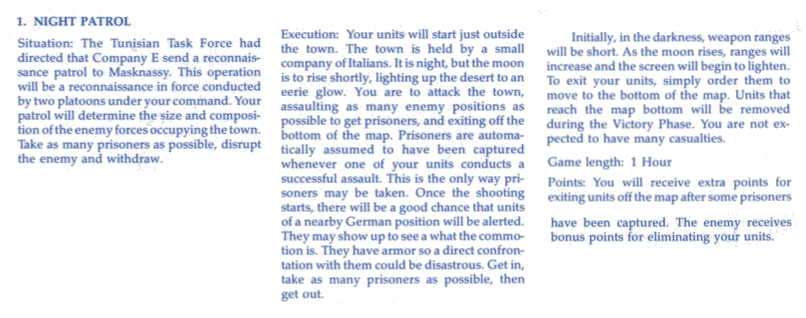
The forces at my disposal are 9 rifle squads, 3 machine gun squads, one bazooka squad and my command squad. Each squad includes 6 men, including the leader who always dies last. This may raise some eyebrows regarding the nature of leadership in the Easy Company, but it supports an experience system which will follow the leader – provided he survives – during the war. Some of my commenters provided names for the squad leaders, but I did not have enough names so I used the default names for the other remaining squads. I will consider the default-name squads uninteresting for the purpose of this AAR and eminently disposable.
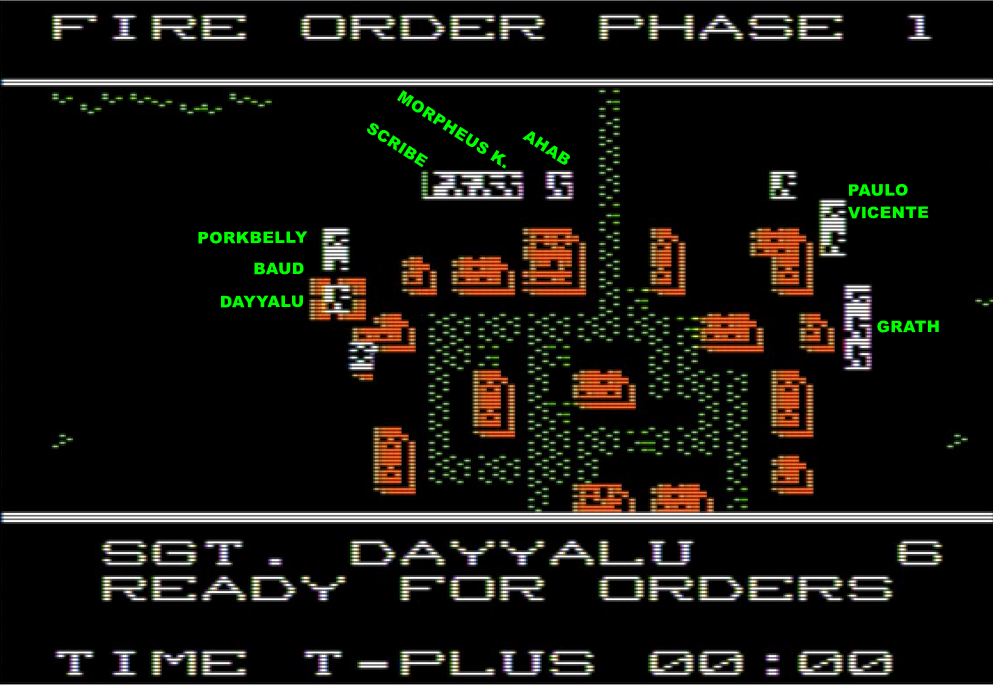
Speaking of disposable, the scenario requires assaulting the Italians in close combat, and in Field of Fire there is only one squad left standing after an assault. The Italians will be surprised, but the dice can still roll wrong, so my plan is to use the disposable squads for most of the assault – if they die, they die. Apart from that, the general strategy is to cover as many buildings as possible as quickly as possible in the first movements, and then occupy the central buildings to support the assault on the rest of the town.
Field of Fire uses an almost modern control system: you give your orders (fire, then movement), while the game is paused, and then you start the execution [ “Operation”], which you can end at any time to give new orders. While Carriers at War was the first game featuring real-time with pause, it had a lot of other UX issues whereas here controls are intuitive. It is hard to convey how natural Field of Fire plays compared to, well, gestures vaguely at all the games I have played so far.
Back to the battle. Moving into the first buildings, I encounter the first Italian squads:
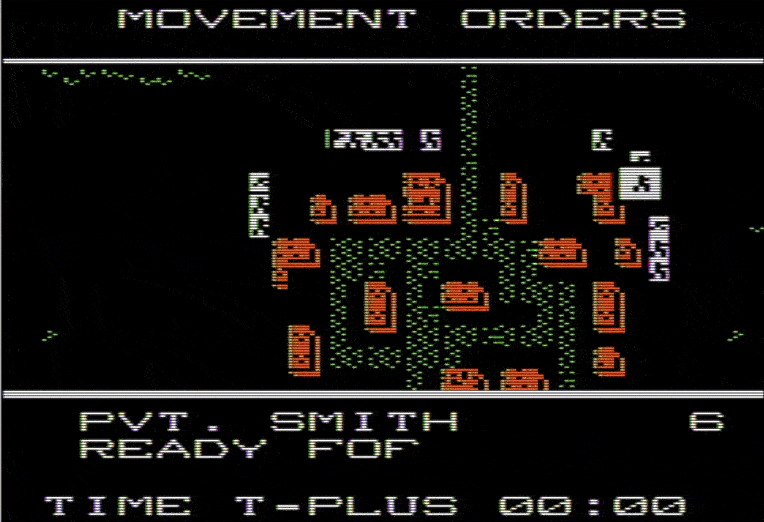
I immediately interrupt the game to order some of my disposable squads to assault the Italians. I also order some squads to assault empty city squares: if there’s something hidden in there they’ll attack it, else they’ll just move into the block.
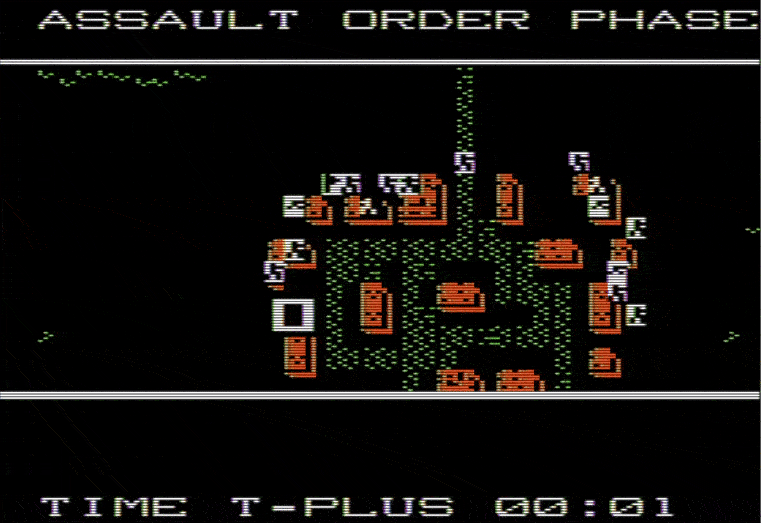
After this interruption, the execution of my plan continues. On the right, Grath makes sure to remain behind a no-name squad. Meanwhile, Dayyalu and Baud progress quickly on the left – so quickly, in fact, that they leave behind them a squad of Italians who start shooting at their back.
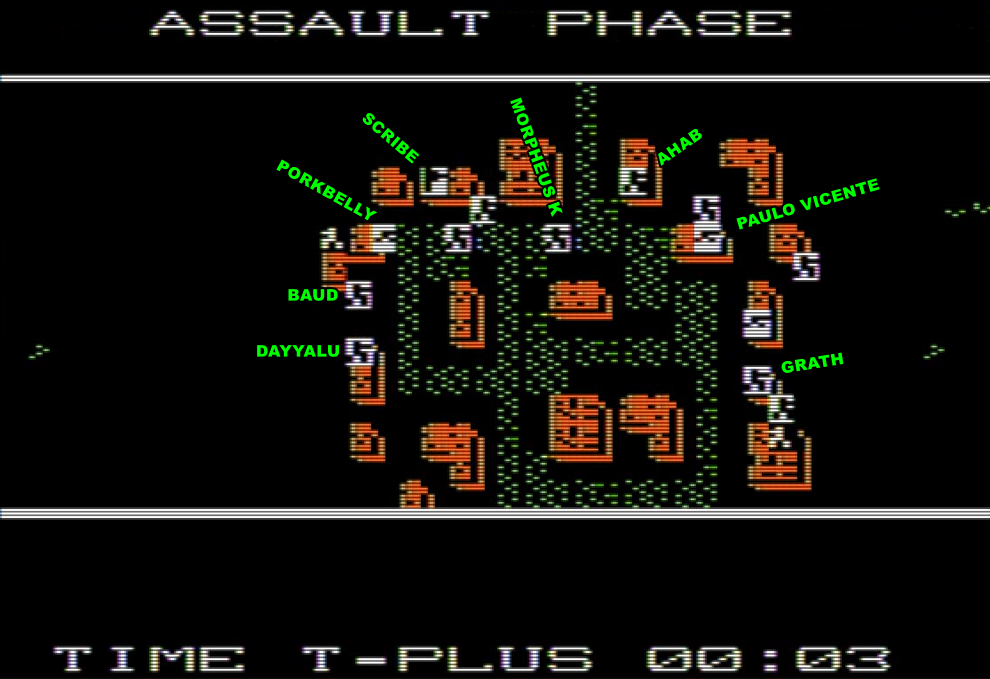
The Italians are pinned down by fire coming from Porkbelly’s machine gun and my own unit, while Baud double-backs and easily assaults them. Meanwhile, Grath follows the other squad on the right flank but both find themselves under fire from two Italian units (one hidden) – they immediately assault, and win the battle.

The mop-up continues. The first layer of central buildings does not contain any enemy, but the buildings in the middle of the city are defended by one Italian squad. It soon finds itself under fire by roughly 30% of my total firepower, before being assaulted and destroyed by Ahab’s squad. Meanwhile, Dayyalu supports the destruction of another Italian group in his corner of the city, while Grath engages at range a third group.
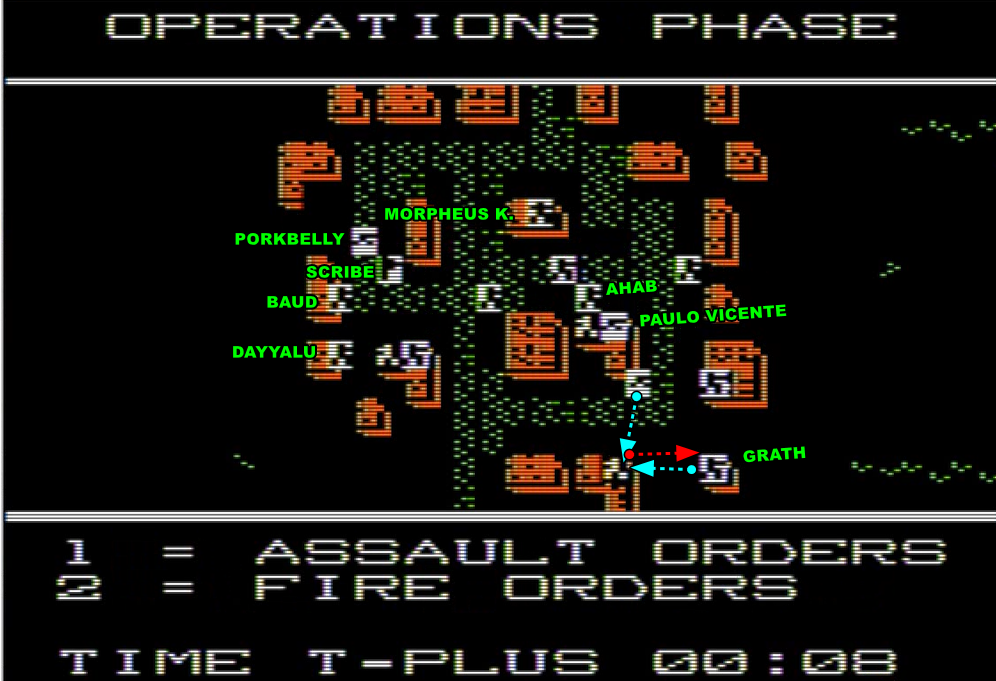
It’s the end of the Italians. The last detected squad is under fire by several machine guns, and it surrenders like the others after an assault.

It’s mission accomplished. Time to evac…
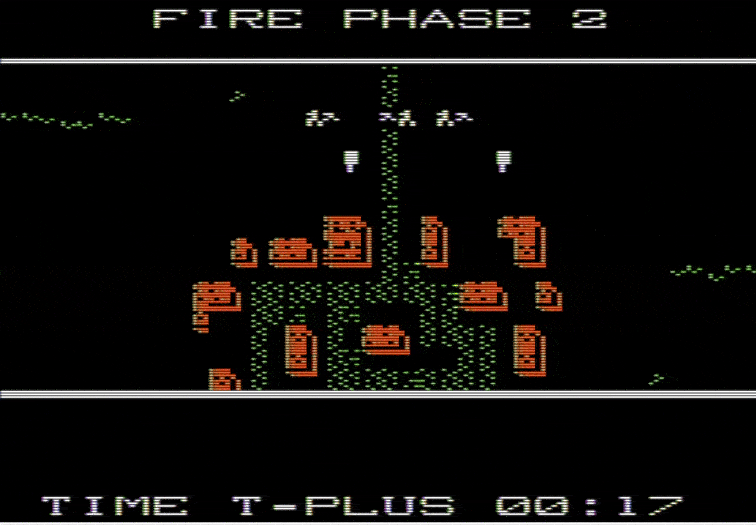
The Germans? Already? I expected them to come later because I did not daddle. In Field of Fire, the computer AI does not move according to the same rules as you. Instead, it randomly interrupts your actions to move all its units in one impulse, as if it was moving according to a traditional turn system. It is absurd and a bit galling, but I suppose it is not totally game-breaking as long as there are few scenarios where the enemy actually moves.
In any case, the Germans are there. It’s a long road of open terrain to evacuate, so I don’t feel I have a choice: I must fight. Luckily enough, Morpheus Kitami and his bazooka are perfectly located to attack one of the tanks, and I may be able to contribute, given the manual says that the headquarters “represents a company headquarters with attached personnel and some decent weaponry, such as an occasional light anti-tank weapon or some small field artillery.” I hope this is a day where I have the occasional light anti-tank weapon and start shooting at the tank. The rest of the platoon engages the German infantry or repositions to be able to do so quickly, except two depleted no-name squads that I find wiser to evacuate.
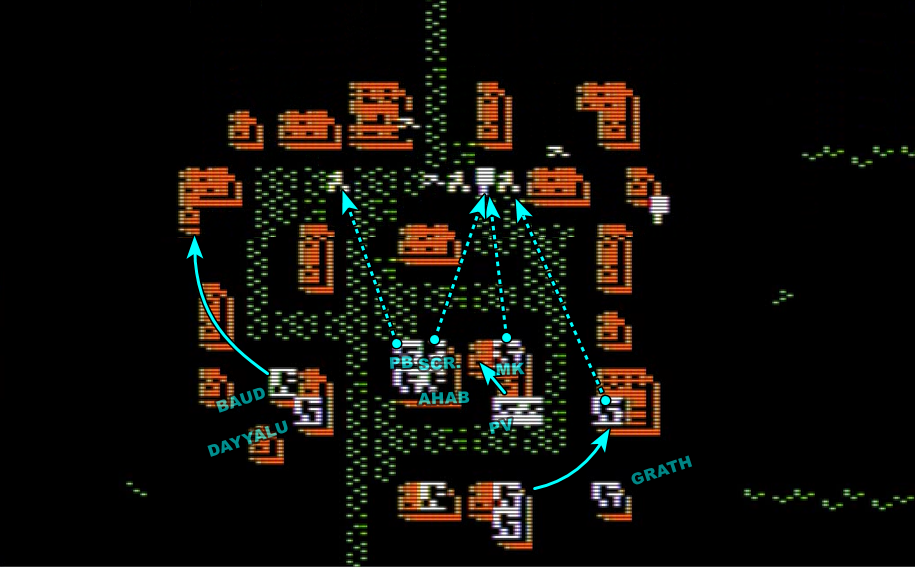
The exposed enemy tank is blown up by either Morpheus Kitami or myself, and the German soldiers within view are suppressed and unable to fire back, so the brief moment of panic is already behind me.

Unfortunately, being pinned down and/or suppressed (two different statuses in the game) does not prevent the Germans from randomly executing one of their turn-based movements, and so they dash.

Only 2 minutes after their last dash, the Germans leapfrog a third time, with this time infantry moving on my flank, in a place where I don’t have enough guns to shut them down. Two squads, including Grath’s, start to take significant fire. I am particularly worried about Grath, as his squad is badly depleted from earlier combat with the Italians – it has only 2 men left!
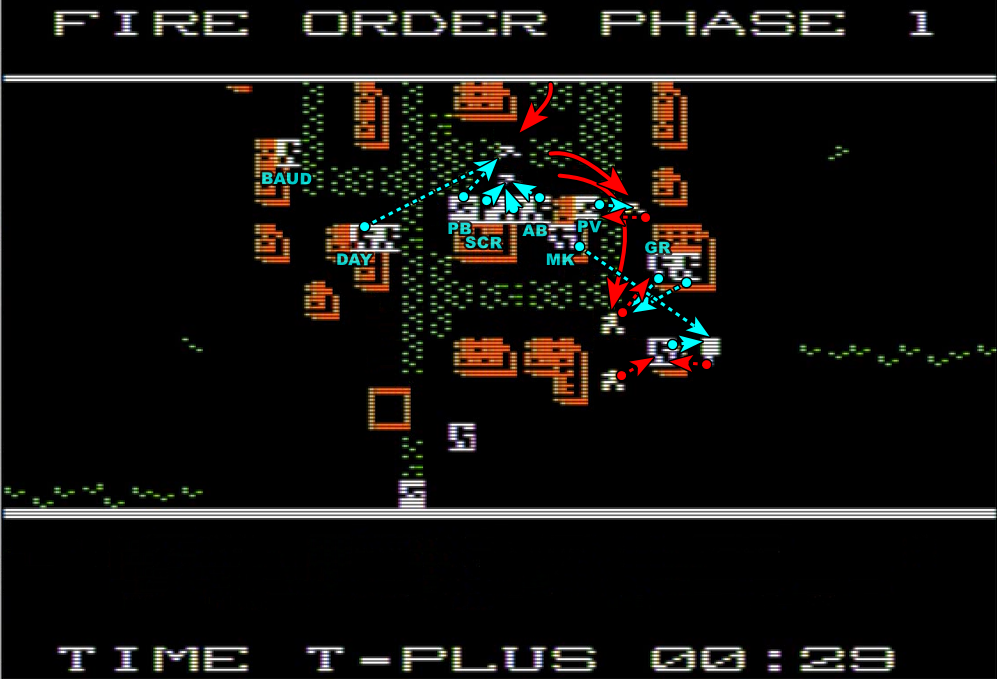
Just as Morpheus Kitami blows up the remaining German tank, the soldier behind Grath falls down. To save him, I move him away from the German squad…
… in a location where he suddenly becomes a target for a German machine-gun!
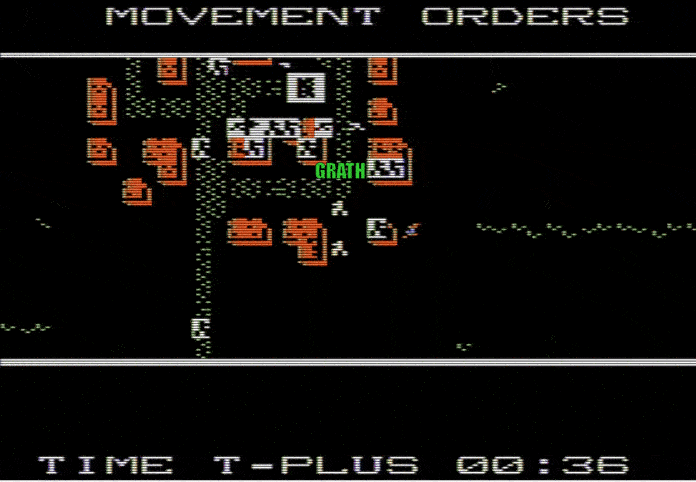
Grath has fallen, only 3 minutes before the end of the battle. The remaining Germans are easily wiped-out, with the battle ending when the Germans are down to two squads.
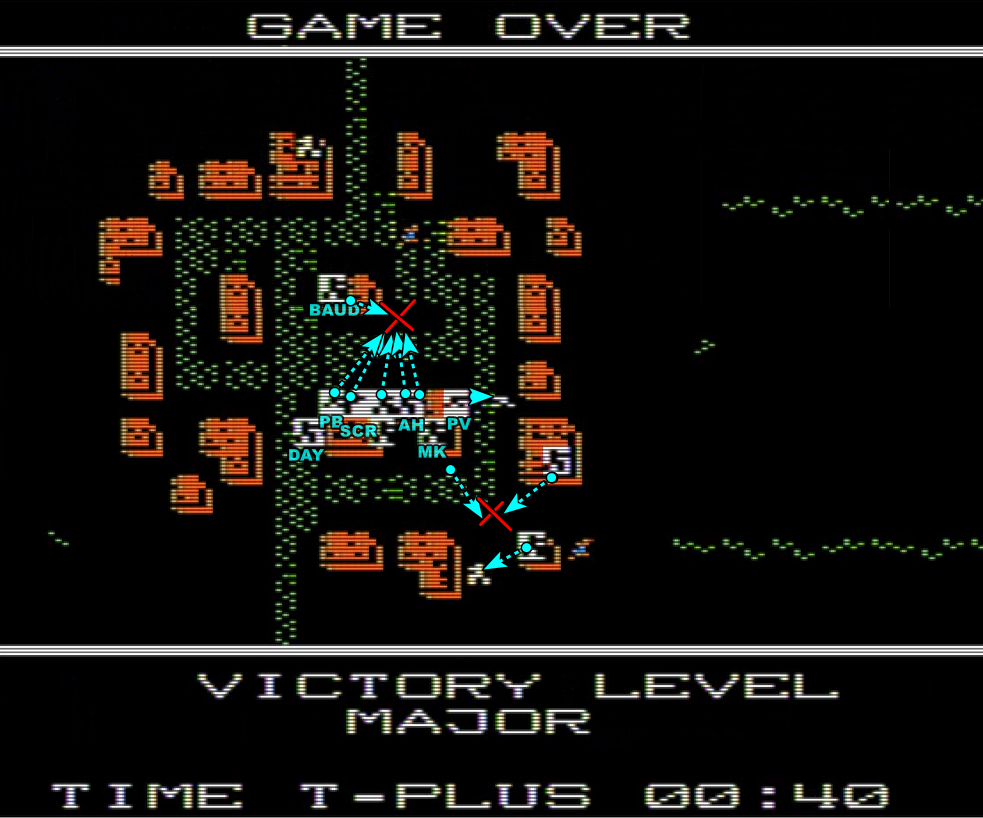
Despite Grath’s loss, this is a major victory, 20 minutes before the expected end of the mission.

The next mission will take us to Sicily, and this time we will get to play with tanks as well. Despite the odd German movement, I really liked the experience and look forward for more – this is so far one of the most enjoyable games of the blog. I need some replacements, so don’t hesitate to hop on if you want to be mowed down by a German (or Italian!) machine gun just like Grath did.
Time played so far (testing expected): 50mn
Tangentially related, I was reading Astral Codex Ten’s latest article, and I realized that he described one of the key reasons why I am playing these games, a reason that I was unable to convey myself. I could easily play one of the many modern wargames, with hours of gameplay and no glaring design flaw – and actually I (also) do. But within the context of this blog, I am on a metaphorical trip to Naples to hear Caruso and in this slow trip I can marvel at each little progress in terms of UX, design and polish, however commonplace these items are nowadays.